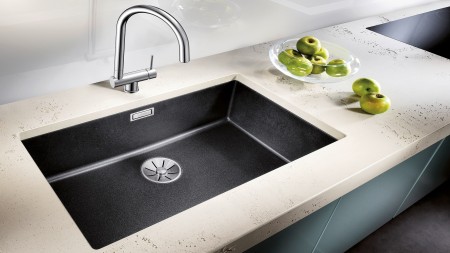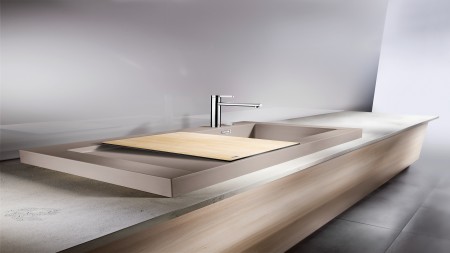Myth number 1: concrete is not suitable for use in the kitchen
Concrete is used in all sorts of elements, including worktops, flooring or kitchen blocks. This creates a symbiosis between skilled factory production and kitchen craftsmanship! Despite all the fascination with this versatile construction material, you have to be mindful of the fact that, unlike metal, ceramic, plastic or varnished surfaces, concrete is porous. If such surfaces are not treated they tend to become soiled, especially by liquids like acids or oils, which are able to penetrate the surface a little. Concrete means that such soiling is able to seep in easily (which means that marks also recede slightly over the course of a few months). As such, it is recommended that concrete inside homes and properties is permanently protected with concrete sealing. Sealing concrete makes it suitable for kitchen use. However, you should ensure that you do not damage the coating when cleaning.



